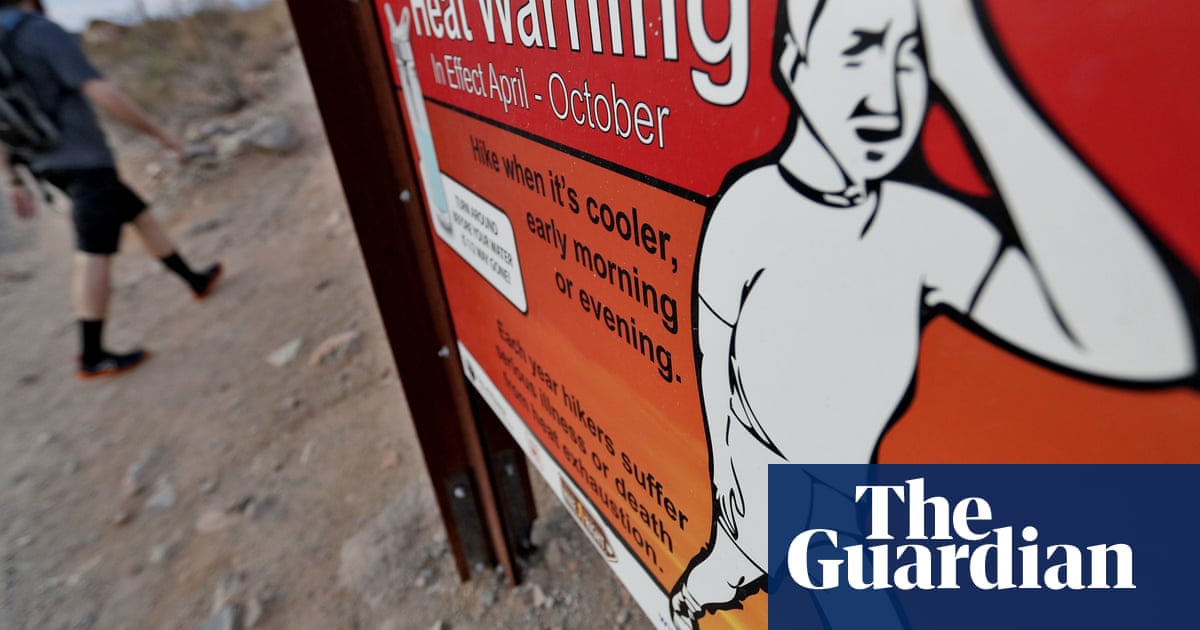A 33-year-old man died while hiking in Arizona’s Gold Canyon on Sunday as temperatures reached about 100F (37.8C), officials said.
Noah Farabaugh, from Arizona, was hiking with a group of five people in the Superstition Mountains, about 40 miles east of Phoenix, when he started having a medical emergency at around 12.45pm.
“When deputies arrived, the man was deceased,” a spokesperson for the Pinal county sheriff’s office told the Guardian. “No foul play is suspected.”
The Pinal county medical examiner will determine the cause of death.
The Superstition fire and medical district said onFacebookthe incident was likely due to heat-related problems. One member of the fire crew toldFox Newsthat the group had been on the trail for roughly six hours and with little water.
The other four hikers were rescued and did not want to go to the hospital.
Officials warned that heat illness can occur quickly, even for experienced hikers, especially as Arizona temperatures can rise above 110F (43.3C) in summer. They also said most heat-related deaths happen between 10am and 4pm, the hottest time of day, with even dry heat causing fast dehydration. Hikers can lose up to 1 liter of sweat per hour while hiking.
The Superstition Mountains rise over 6,000ft above the Sonoran desert. The Superstitions are part of Tonto national forest and include the Superstition wilderness area, which can only be reached by hiking or horseback. The Superstition wilderness area is about 160,000 acres of rugged desert, according to the Visit Mesawebsite.
The name comes from stories told by the Akimel O’odham people, who spoke of strange sounds, disappearances, and deaths in the mountains, according to Phoenix’s touristpage.
In the 1840s, the Peralta family from Mexico was said to have discovered gold mines in the area, but their final expedition ended in an Apache ambush, giving rise to the name of the trailhead Massacre Grounds, according toArizona State Parks.
Later, in the 1870s, a German immigrant named Jacob Waltz, known as the “Dutchman”, supposedly rediscovered the lost mine with the help of a Peralta descendant. He and his partner allegedly hid gold near Weaver’s Needle, but the mine’s location was never confirmed. Waltz died in 1891, reportedly revealing clues to the mine’s location to a neighbor, but no one has successfully found it since.
The tale of the “Lost Dutchman’s Mine” has inspired many searchers, some of whom met mysterious or deadly fates.
